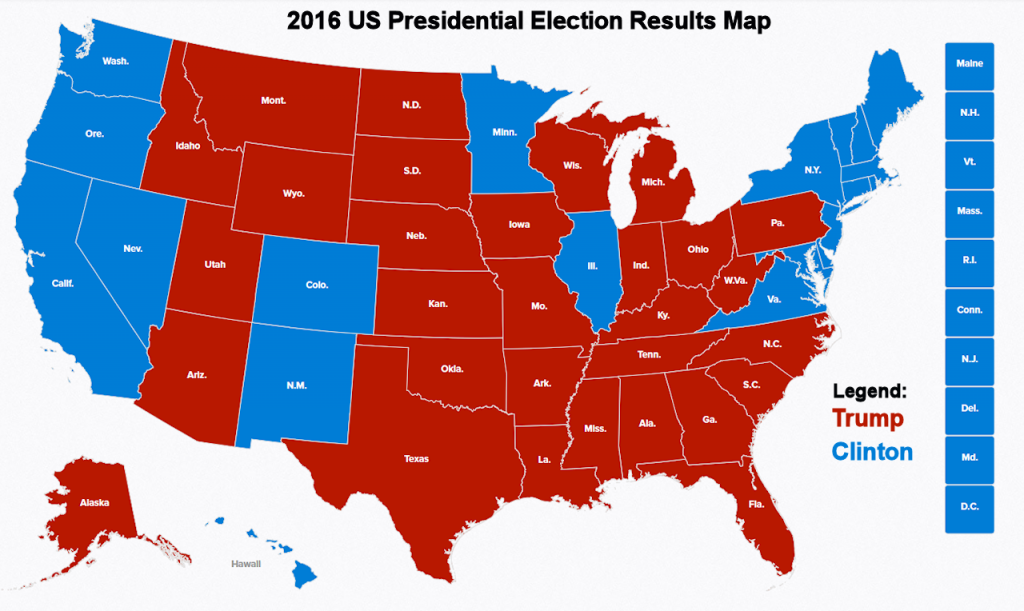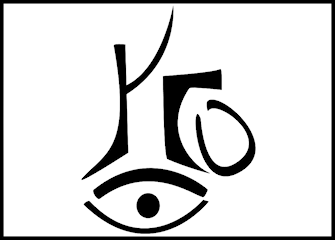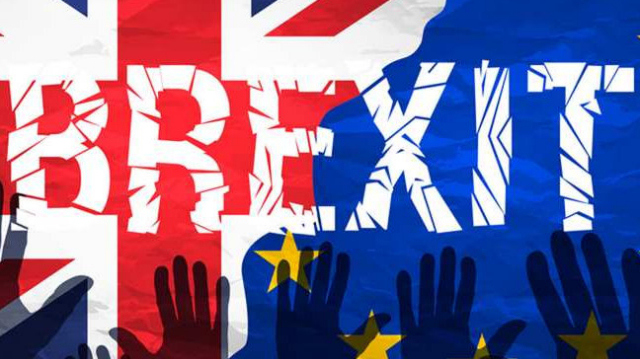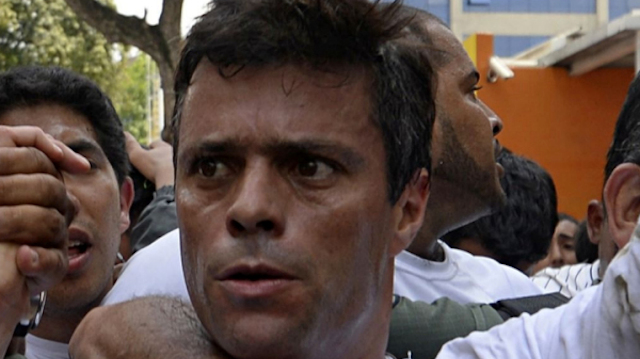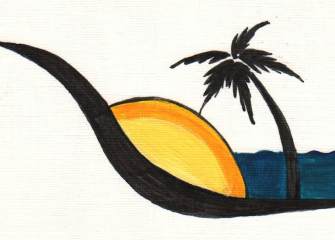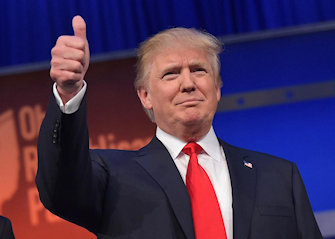There is been a lot of uproar advocating that the popular vote should elect the US President. That’s not what happened in 2016. In fact, that has never happened. Lets look at the story the election results show.
This time around Hillary Clinton got almost 3 million more votes than Donald Trump. Clinton won 22 states including the District of Columbia while Trump won 30 states. The 306 electoral college votes he accumulated from those 30 states gave Trump the Winning margin. What about those 3 million voters where did they come from and why don’t they count?
The electoral college is actually an ingenious system designed to protect the franchise of unaware citizens. These citizens who are just going about their lives, caring for a family, or working to pay the bills. The electoral college protects the non-voter the ones who choose to abstain.
Here is how it happens. Every 10 years we do a census. The electoral college votes are allocated to each state in proportion to their population. The voters in each state who DO turn out to vote represents everyone else in that state who DON’T. Its a fair method to represent a states electoral college votes.
A popular vote amendment begs the question. Why should some states whose voters have the passion to vote out-weight another state whose voters may not get to the polling booth for any variety of reasons?
Our analysis shows that Hillary Clinton got a 62.7% average turnout in states that she won. Donald trump got an average turnout of 59% in states that he won. The following tables tell the tale. We have provided the source data below should you want to do the calculations yourself.
The 10 lowest turnout rates
| State | Turnout Rate | Winner |
|---|---|---|
| Hawaii | 41.7 | Clinton |
| West Virginia | 49.9 | Trump |
| Tennessee | 51.2 | Trump |
| Texas | 51.2 | Trump |
| Oklahoma | 52 | Trump |
| Arkansas | 52.6 | Trump |
| Arizona | 54.3 | Trump |
| New Mexico | 54.7 | Clinton |
| Mississippi | 55.5 | Trump |
| New York | 55.7 | Clinton |
Trump won 3 of 4 low turnout states and 7 of the 10 lowest turnouts. Hawaii’s lowest turnout suggests that citizens there may not have had any passion for who won. Many voters in these states might also have thought their candidate would win whether they turned out or not. The 7 states in this list who polled red for Trump are the ones he ended up winning.
The 10 highest turnout rates were:
| State | Turnout Rate | Winner |
|---|---|---|
| Minnesota | 74.1 | Clinton |
| New Hampshire | 71.5 | Clinton |
| Maine | 70.7 | Clinton |
| Colorado | 69.9 | Clinton |
| Wisconsin | 69.3 | Trump |
| Iowa | 68.2 | Trump |
| Massachusetts | 66.8 | Clinton |
| Oregon | 66.6 | Clinton |
| Maryland | 66.2 | Clinton |
| Virginia | 65.7 | Clinton |
Clinton won the top 4 highest turnout states. She also won 8 or the top 10 turnout states. 5 of the top 10 were battleground states while the others polled blue for Clinton. Trump won one of these battlegrounds and the Wisconsin surprise.
The bottom line here is that more voters, 63% on average, turned out for Clinton in states that she won. Its out of proportion to the 59% on average voters who turned out for Trump in states that he won. Simply put, a national popular vote selection of US President would disenfranchise the non-voting citizens in low turnout states.
This design is what the US founding fathers implemented to keep together a federation of states. States are autonomous with exceptions of federal oversight in cases like interstate commerce. A centralized federal government may eventually tend towards dictatorship and then evolve back to monarchy. This is one of the things the constitutional writers wanted to avoid.
A constitutional amendment to use the popular vote to select the US president would tend to dissolve the independence of states. A state’s allocation of congressmen is assigned in the same way as electoral college votes and no-one is calling that into question. One possible outcome maybe the breakup of the US federation.
In this 2016 election cycle some Anti-Trump protesters in California called for the state to break away and form its own nation. Some futurists and social scientists have suggested that a set of West Coast states may coalesce into an independent federation that could include Mexico. For example here is a look at the 11 Nations or Cultures of the United States published by Washington Post and Business Insider.
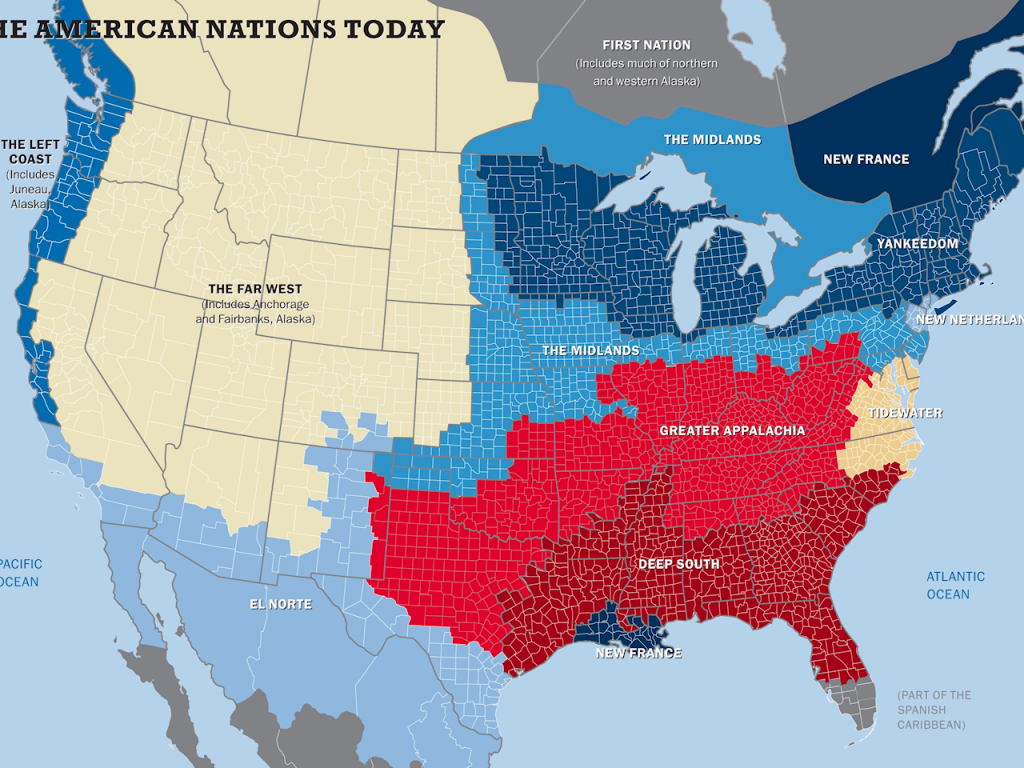
Lets do away with this call for a popular vote amendment. The system works well the way it was designed. Most of all be careful what you wish for… It just might happen…
Sources:
- Micheal McDonald’s 2016 General Election turnout rates
- Simon Rogers’ US election 2016: How to download county-level results data
- Downloadable Google Spreadsheet with merged information from both sources. Used as a basis for this article.
- Business Insider 11 Nations of the USA

